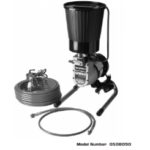In an emergency room, medical teams work quickly to understand a patient’s condition. Diagnostic tools help them gather information to guide their next steps. One of these tools is the computed tomography scan, also known as a CT scan. This imaging technology provides a detailed view of the inside of the body, offering valuable information during urgent medical situations. Understanding how a CT scan works and when it might be used can help clarify its function in emergency care.
What Is a CT Scan?
A computed tomography scan is a medical imaging procedure. It uses specialized X-ray equipment to create detailed pictures, or slices, of areas inside the body. A standard X-ray machine emits a single beam from a single angle. In contrast, a CT scanner rotates around you, capturing multiple images from different angles. This process enables a more comprehensive view.
A computer then processes these images. It combines them to create cross-sectional views of your bones, blood vessels, and soft tissues. These images are much more detailed than what a regular X-ray can provide. The result is a comprehensive view that enables medical professionals to examine internal structures with great clarity. They can view these images individually or combine them to create three-dimensional models.
When Is One Needed?
Medical professionals may use a CT scan to examine a wide range of conditions, especially when a quick and detailed view is required. The information gathered from the scan helps them assess a situation. They can identify injuries or abnormalities that may not be visible through other diagnostic methods.
Here are some situations where a CT scan may be suggested:
- Head injuries: To look for bleeding, swelling, or fractures within the skull after an accident or fall.
- Chest pain: To examine the heart, lungs, and major blood vessels for conditions like blood clots or aortic issues.
- Abdominal pain: To find the source of sudden, severe pain by looking at organs like the appendix, intestines, liver, or kidneys.
- Suspected stroke: To see if there is bleeding in the brain or a blocked blood vessel, which helps guide immediate actions.
- Complex bone fractures: To get a clearer picture of broken bones, especially around joints like the wrist or ankle, to help plan treatment.
This imaging tool provides doctors with a non-invasive way to visualize what is happening inside the body. The detailed images from a CT scan can provide valuable information in various urgent medical contexts.
What’s the Role in Emergency Medicine?
In an emergency department, time is a significant factor. A CT scan provides a rapid method for obtaining detailed internal images, allowing medical teams to assess a patient’s condition efficiently. The speed of the scan, which often takes only a few minutes to complete, makes it a practical choice for urgent situations. It helps doctors gather information quickly to support their diagnostic and evaluation processes.
The scan’s ability to show different types of tissue, including bone, muscle, and organs, gives a comprehensive overview. This is particularly useful in trauma cases, where a person may have multiple injuries. Instead of performing several different types of tests, a single CT scan can sometimes provide a broad view of the head, chest, and abdomen. This streamlined approach helps create a fuller picture of a patient’s status.
Consult a Specialist
If you have questions or concerns about your health, speaking with a medical professional is a good next step. A doctor can evaluate your specific situation and medical history. They are the best resource to answer your questions and provide guidance tailored to you. You can discuss any symptoms you are experiencing and explore what options may be right for your circumstances. Open communication with a healthcare provider can help you feel more informed about your health.











